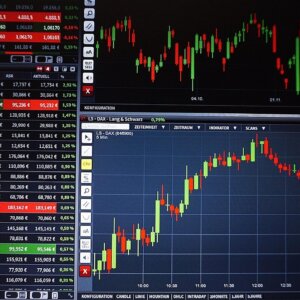Making Tax Digital for income tax (MTD IT) is being phased in from April 2026. Previously known as MTD ITSA (Making Tax Digital in Terms of Income Tax), it will apply to those receiving income from self-employment (including sole traders) and/or property (including overseas property income).
Initially, this will apply where an individual’s combined gross income from any of these sources is above a £50,000 threshold. (Which is based on your 2024/25 self assessment tax return).
From April 2027, those with a combined gross income from these sources above £30,000 will be mandated to submit their self assessment tax returns using the Making Tax Digital for Income Tax.
Additionally, those with gross self-employed and property income of more than £20,000 will also be mandated to join this scheme. It was confirmed in the Spring Statement on 26 March 2025 that this will begin from April 2028.
The current MTD IT regulations do not cover partnerships, however, it is expected to be extended to include partnerships at an unconfirmed future date.
Our MTD accountants at Alexander & Co are able to help you make the transition.
Alexander & Co – Making Tax Digital for Income Tax ready
Alexander & Co. is ready to assist clients in transitioning to Making Tax Digital for Income Tax. Whether you are new to self assessment tax returns or have previously filed these, we can assist you as a client, completing your Making Tax Digital Income Tax Self Assessments on your behalf.
Additionally, with our property tax and specialists, we are also well-suited to assist landlords and property investors, as well as self-employed/sole traders.
From utilising the most suitable software, completing your quarterly digital updates and year-end finalisation (required in addition to final self assessments) to advising on digital record-keeping and bookkeeping, we can support you.
To discuss how we can assist you with this, please contact us
Guide to Making Tax Digital for Income Tax
Below we provide a useful summary of the key aspects of Making Tax Digital for Income Tax for both self-employed/sole traders and Landlords, which we hope is a useful guide.
What are the main changes for individuals in Making Tax Digital For Income Tax?
When MTD IT becomes mandatory, those who are required to use this will be required to:
- Keep digital records in a software product or spreadsheet.
- Report to HMRC five times a year. This includes submitting quarterly updates digitally, alongside finalising their tax position on 31 January each year (known as year-end finalisation).
- Quarterly updates will have to be submitted using a functional, compatible software product. This is one which can access HMRC’s application program interfaces (API) platform.
Those required to submit self assessments using MTD IT will need to obtain a compatible commercial software package. Alternatively, an agent can be appointed to undertake Self Assessments using Making Tax Digital. Alexander & Co can assist with this and is at the forefront of the implementation of MTD IT for both existing and new clients.
It is important to note that maintaining paper records will no longer meet the legislative requirements. Paper and online self assessment tax return will only remain available to those taxpayers outside the scope of MTD IT (or those digitally excluded).
Key Dates for Making Tax Digital for Income Tax
- April 2025: Public testing for MTD IT is expected to begin. Individuals and agents can sign up to this scheme.
- April 2026: MTD IT is required for those receiving gross income from self-employment and/or property over £50,000
- April 2027: MTD IT is required for those receiving gross income from self-employment and/or property over £30,000
- April 2028: MTD IT is required for those receiving gross income from self-employment and/or property over £20,000 (confirmed in the 2025 Spring Statement)
The above thresholds will apply to the total turnover/gross income from all sources of self-employment and property, including overseas property income.
For those mandated to join MTD IT in April 2026 (those with total relevant gross income over £50,000), the following dates are relevant:
- April 2026: Recordkeeping begins
- August 2026: The first quarterly updates for the quarter 6 April to 5 July 2026, will be due on 7 August 2026.
- January 2028: The first final declaration for the tax year 2026/27, will be due on 31 January 2028.
Digital record-keeping requirements
Invoices and receipts are required to be scanned and stored digitally. Whilst these can also be kept in paper form, each individual transaction (and not summaries) is required to be recorded and stored digitally.
Digital records will include:
- Any other information which HMRC considers relevant to understand updated information. This includes the category into which transactions fall.
- Financial information, which is required to be included in quarterly updates
- Details of the individual items within this information
- The specific dates and amounts when these individual items were incurred or received
Jointly owned property and MTD IT
For jointly owned properties, every individual is required to keep their own digital records and submit updates for their own share of income and expenditure. However, they will be permitted to record category totals in software. The solution of how this will work in practical terms, for example, where there are multiple properties owned in different proportions, is still being developed by HMRC.
As specialist advisors in property tax and accountancy, Alexander is well equipped to assist Landlords and investors. Please contact us to discuss your needs.
Making Tax Digital for Income Tax quarterly updates
These will be required for standard quarters. This is irrespective of the accounting period.
These standard quarters are as follows:
- 6 April – 5 July
- 6 July – 5 October
- 6 October – 5 January
- 6 January – 5 April
Alternatively, you will be able to report for calendar quarters (although this must be elected). These are:
- 1 April – 30 June
- 1 July – 30 September
- 1 October – 31 December
- 1 January – 31 March
The deadlines for filing quarterly updates will be on the 7th of the following month for each quarter. Therefore, if an election for calendar quarters is made, an extra five days are available before the update is due. Updates can be submitted more frequently and up to 10 days earlier than the quarter dates, where the information for the quarter is already known and completed.
Separate quarterly updates are required for each business. If an individual operating as a sole trader also has a UK property business, they would need to submit these separately. Income from UK properties is treated as a one business. Income from overseas property is also treated as a single business (and separate from UK property income).
Separate updates are also required for each self-employed trade/business.
MTD IT Year-end finalisation
Following the submission of the fourth quarterly update as final (following any resubmissions), the year-end finalisation process can then be completed.
This is a two-step process:
The business source adjustable summary (BSAS) is the first step. Here, your MTD software retrieves the totals from the finalised quarterly update submission from the HMRC system.
Here, tax and accounting adjustments are required to adjust quarterly update figures to final figures and the submission is made to HMRC for the tax year. This is carried out for each income source.
The second step entails collating information submitted through MTD IT with the taxpayer’s other income sources that comprise the complete Self Assessment return. This includes a declaration.
Withdrawing from MTD IT
Once a taxpayer is within the scope for the Making Tax Digital for Income Tax regime, a taxpayer is only allowed to withdraw under certain circumstances. A taxpayer will only be able to withdraw when total turnover/gross income falls below the threshold for three successive years.
This is to avoid taxpayers joining, exiting, and then re-joining on a regular basis as turnover fluctuates. We also understand that if a business ceases. i.e. a taxpayer is no longer self-employed/has no property income, they will also be able to withdraw MTD IT.
Alexander & Co – comprehensive tax and accountancy services for Making Tax Digital Income Tax
Alexander & Co is Making Tax Digital ready to assist clients’ transition to MTD IT.
Whether you are new to self assessment tax returns or already submitting these, we can assist you as a client. Here we can complete your Making Tax Digital Income Tax Self Assessments on your behalf.
If you would like to transfer your self assessment tax returns over to Alexander & Co before the Making Tax Digital for Income Tax deadline, we will make sure your transition to MTD IT is seamless when the time arrives. We can support you whether you already use another accountant or currently complete your self assessment tax returns yourself.
To discuss our comprehensive services, please contact us using the form on this page, emailing info@alexander.co.uk or telephone one of our offices on either 0161 832 4841 or 0207 167 7220. Whether an individual or a business, we can assist.
Further reading
Contact a professional now

"MD's want to concentrate on running their business while their advisors concentrate on all the business advisory and regulatory problems faced by a company the size of Stax. I want to be able to sleep at night; Alexander & Co allow me to do that."http://www.staxtradecentres.co.uk
Featured news



